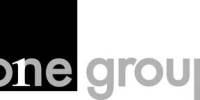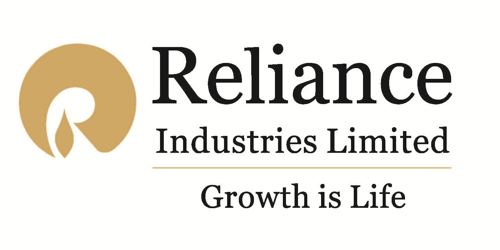EXECUTIVE SUMMARY
The object of financial analysis is an evaluation of the firm’s performance. Financial analysis can be used to analyze the determinants of a firm’s reported earnings’ thereby replying to identify the potential strengths and weaknesses of the firm’s performance. The entire job helps us to have practical exposure with theoretical knowledge.
In this paper’ the performance of ‘QASEM DRYCELLS LIMITED’ is thoroughly evaluated based on the information given in the annual reports of the firm.
As given in the first part of the report’ it has the ‘Corporate Review’ including the mission statement’ management apparatus’ the general information about the firm.
In the second part of the paper is presented the ‘Ratio Analysis’ that uses the financial statement in a unique manner to provide a different perspective about the firm.
The third part contains the summary of the financial report along with some recommendations.
A consolidated balance sheet and profit loss account of the three years’ 2000.2001.2002. is provided in the conclusive part.
Limitations of Financial Statement analysis
Financial analysis, particularly ratio analysis, is widely used by the firm’s managers, its creditors, and potential investors in it’s stock .it is an important technique, and anyone wishing to have a complete understanding of managerial finance must be familiar with it .
Nevertheless, financial analysis has limitations and potential problems, including the following:
- Based as it is on accrual accounting data and historical costs, the current period’s figures may not be closely related to cash flows.
- Because of alternative accounting treatments, comparisons among firms may be difficult. Furthermore, one firm’s accounting procedures may change over time, making trend analysis less reliable.
- Many large corporations have multiple divisions operating in multiple industries, making difficult the compilation of the industry averages that will be used for a benchmark.
- Inflationary periods can significantly distort a firm’s recorded values relative to the actual market values. Both inventory costs and depreciation charges are well known in this regard, and both affect the calculation of profits. Inflation can distort the comparison of ratios for several firms, or one firm’s ratios over time.
- Financial analysis may be distorted by what is termed window dressing whereby a firm attempts to make the financial statements look better for at least a short period of time. An example of window dressing would be borrowing long-term to improve the liquidity ratios at the end repaying the loan shortly thereafter.
QUASEM DRYCELLS LTD.
CORPORATE PROFILE
Board of Directors……… Chairman — Seleena Begum
Managing Director……….. Tasvir ul Islam
Director… Khadiza Shamim, Dr. Reyan Anis Islam, Nafisa Quasem
Company Secretary…… Anwarul Islam
Auditors ………. Aziz Halim Anwar & Co.
Chartered Accountants
726/A, Satmosjid Road, Dhanmondi, Dhaka-1209
Bankers…… Agrani Bank
Principal Branch; Motijheel C/A, Dhaka-1000
CITI Bank
ChamberBuilding; 122-124, Motijheel C/A, Dhaka-1000
Legal Advisor…… Nurul Haq Majumder
Factory…… Unit-1&2; Gorai, Tangail
Unit-3; Baimail, Gazipur
Registered Office …….. A-1/6-Mohammadpur, Asad Avenue, Dhaka-1207
Head Office……… 107, Motijheel C/A, Dhaka -1000
Other concerns
- Quasem lamps Ltd.
- Quasem Zinc Ltd.
- Quasem Textile Mills ltd.
- Quasem Silk Mills Ltd.
- Quasem Cotton Mills Ltd.
- Quasem Rotor Spinning Mills Ltd.
* Proposed Dividends: 10 % Stock Dividends (Bonus Share)
| Board of Directors | Chairman — Seleena Begum |
| Managing Director | Tasvir ul Islam |
| Director | Khadiza Shamim, Dr. Reyan Anis Islam,Nafisa Quasem |
| Company Secretary | Anwarul Islam |
| Auditors | Aziz Halim Anwar & Co.Chartered Accountants 726/A, Satmosjid Road, Dhanmondi, Dhaka-1209 |
| Bankers | Agrani BankPrincipal Branch; Motijheel C/A, Dhaka-1000 CITI Bank ChamberBuilding; 122-124, Motijheel C/A, Dhaka-1000 |
| Legal Advisor | Nurul Haq Majumder |
| Factory | Unit-1&2; Gorai, TangailUnit-3; Baimail, Gazipur |
| Registered Office | A-1/6-Mohammadpur, Asad Avenue,Dhaka-1207 |
| Head Office | 107, Motijheel C/A, Dhaka -1000 |
Particular | 2003 | 2002 | 2001 |
Results of Operations |
|
|
|
| Turnover* | 2,892,292 | 2991581 | 2703693 |
| Gross profit* | 426953 | 758553 | 763923 |
| Operating profit* | 330887 | 671140 | 675971 |
| Net profit/(loss)* | (217937) | 180750 | 252911 |
| Basic earnings per share** | (24.77) | 20.54 | 28.74 |
| Cash dividend per share | — | 5 | 10 |
| Stock dividend per share | 10 | — | — |
| Cash inflow from/(used in)operation activities | (69883) | 313536 | (277192) |
Financial Position |
|
|
|
| Total assets* | 5584190 | 5896408 | 5600706 |
| Tangible fixed assets (gross)* | 3323210 | 3249247 | 3233403 |
| Financial assets* | 2052957 | 1931154 | 1522056 |
| Gross working capital* | 3207737 | 3429910 | 2975175 |
| Net working capital* | (94140) | 365735 | 381980 |
| Authorized capital* | 3000000 | 3000000 | 3000000 |
| Paid up capital* | 880000 | 880000 | 880000 |
| Shareholders equity* | 1442946 | 1704883 | 1524133 |
Key Financial Ratios, Figures & Market Data |
|
|
|
| Return on paid up capital | (24.77%) | 20.54% | 28.74% |
| Return on investment | (3.96%) | 3.10% | 4.54% |
| Net asset value per share(Based on shareholders equity)** | 163.97 | 193.74 | 173.20 |
Market Value of Share |
|
|
|
| Dhaka** | 78.00 | 103.60 | 129.61 |
| Chittagong** | 74.84 | 104.00 | 130.75 |
| Price earning ratio(Based on DSE price) | (3.15) | 5.04 | 4.51 |
| Price earning ratio(Based on DSE price) | (3.02) | 5.06 | 4.55 |
Other Data |
|
|
|
| Number of Shares | 8800000 | 8800000 | 8800000 |
| Number of Shareholders | 8710 | 8770 | 8726 |
| Production(in thousand LM) | 23490 | 25555 | 26060 |
| Capacity Utilization | 84% | 91% | 93% |
*Value in thousand taka ** Value in Taka
Current Ratio:
This ratio indicates the ratio of current assets to current liabilities.
Current Ratio = Current assets
Current Liabilities
The current ratio of different years shows that the firms ability to meet short run financial contingencies have reduced over the years.
Quick Ratio:
It indicates the current assets less inventories divided by current liabilities.
Quick Ratio = Current assets – Inventories.
Current liabilities
Quick Ratio of different years:
Years | Quick ratio |
2001 | .5885 |
2002 | .6417 |
2003 | .6324 |
The quick ratio or acid test ratio of the company reflects that the was not able to pay obligations as they come due. There fore the short term lenders may have refused to advance new credits .
Inventory Turnover:
It means the ratio of sales to inventories.
Inventory turnover = Sales
Inventory
Inventory turnover of different years:
Years
| Inventory turnover ratio |
2001 | 1.8658 times |
2002 | 2.0493 times |
2003 | 2.5836 times |
The ratio reflects that the firms stock is not managed efficiently. The company replaces the inventory level not even three times per year for the above years. The firm may have excessive stock level, presence of obsolete inventory or unexpectedly low sales levels.
Average Collection Period:
It indicates the average time period between sales & receipts of payment for those sales.
Average collection period = Receivables
Sales per day
Here, Sales per day = Sales
365
Average collection period of different years:
| Years |
Average Collection Period Ratio 2001203. 2210 days2002231. 5093 days2003256. 7834 days
The above ratio shows extremely longer collection period which indicates that the firms receivable policy is not effective rather going worse. The firm’s customers are not prompt payers.
Fixed Asset Turnover
It indicates the ratio of sales to net fixed assets.
Fixed assets turnover = Sales
Fixed assets
Fixed asset turnover of different year:
Year
| Fixed asset turnover ratio |
2001 | 1.0298 times |
2002 | 1.2129 times |
2003 | 1.2171 times |
Total Asset Turnover:
It indicates the ratio of total asset.
Total asset turnover = Sales
Total assets
Total assets turnover of different tears:
Total asset
turnover 2001 .4827 times2002 .5074 times2003 .5179 times
Debt Equity Ratio:
It is the ratio of total debt to stockholders equity.
Debt equity ratio = Debt
Equity
Debt equity of different years:
Years | Debt equity ratio |
2001 | 2.6747 : 1 |
2002 | 2.4585 : 1 |
2003 | 2.8699 : 1 |
Debt Ratio:
It is the ratio total debt to total assets.
Debt ratio = Total debt
Total assets
Debt ratio of different years:
Years | Debt ratio |
2001 | .741 : 1 |
2002 | .7109 : 1 |
2003 | .7279 : 1 |
Times Interest Earned:
It indicates the ratio of earnings before interest & taxes to interest changes.
Time interest earned = Net operating Income
Interest expenses
Time Interest Earned For Different Years
| Years | Time Interest Earned Ratio |
2001 | 1.6470 times |
2002 | 1.3943 times |
2003 | .0629 times |
Profit Margin
It’s the Ratio of Net Profit after Taxes to Sales
Profit margin = Net income After Tax
Sales
Profit Margin for different years
Years | Profit margin ratio |
2001 | 9.3543 % |
2002 | 6.0412 % |
2003 | (7.5351) % |
Return on assets ( ROA)
It’s the ratio of net income to total assets
ROA= Net Income
Total Assets
ROA for Different years
Years | Return on assets ratio |
2001 | 4.5157 % |
2002 | 3.0654 % |
2003 | (3.9028) % |
Return on Equity (ROE)
It indicates the rate of return earned on the Book value of the owners’ equity
ROE = Net income after tax
Common equity
ROE for different Years:
Years | Return on equity ratio |
2001 | 16.5938 % |
2002 | 10.6019 % |
2003 | (15.1036) % |
SUMMARY OF THE ANALYSIS
(Findings)
We may summarize the ratios & attempts to draw some rough conclusion. All the information needed for a conclusive judgment about the company is not available in the financial statements. Such conclusions may require information that only management has.
Here, as evidence by current & quick ratio, the firm’s liquidity seems to be relatively low. This may be because the company is purposefully aggressive in its working capital management. However, creditors & even the stockholders may not like a relatively low liquidity position.
The firm’s collection period is quite longer indicating a very loose credit policy. The firm is unable to show efficiency in managing its assets.
Quasem Drycells Ltd. is extremely dependent on debt finance that has resulted in decreasing profit & even loss recently. Finally, the company fails to prove any outstanding performance in all spheres of activities.
QUASEM DRYCELLS LTD.
Balance Sheet for 2003, 2002, 2001
| Particulars | 2003 | 2002 | 2001 |
| Assets | |||
| Non-current assets | 2,376,453,323 | 2,446,497,969 | 2,625,531,100 |
| Property plant & equipment-carrying value | 2359978194 | 2451265131 | 2610225674 |
| Long term security deposits | 16475129 | 15232838 | 15305426 |
| Current assets | 3,207,736,844 | 3,429,909,798 | 2,957,175,284 |
| Inventories | 119491404 | 1463658446 | 1449089396 |
| Trade receivables | 2034774542 | 1897476400 | 1505335016 |
| Advances, deposits & |
Total Liabilities & Shareholders Equity5,584,190,1675,896,407,7675,600,706,384
QUASEM DRYCELLS LTD.
Profit & Loss Account of 2003, 2002, 2001
Particulars | 2003 | 2002 | 2001 |
| Revenue | 2,892,292,131 | 2,991,581,342 | 2,703,693,437 |
Cost of revenue | ( 2,465,339,414) | (2,233,028,315) | 1,939,770,057 |
| Gross profit | 426,952,717 | 758,553,027 | 763,923,380 |
| Administrative expenses and distribution | ( 96,066,008) | ( 87,412,653) | 87,952,209 |
Profit from operations | 330,886,709 | 671,140,374 | 675,971,171 |
| Finance cost | ( 548,823,692) | (481,352,985) | 410,414,235 |
| Contribution to workers participation / welfare fund | |||
| Net profit / (loss) for the year | |||
| Tax holiday reserve | |||
| Surplus / (deficit) for the year | |||
Surplus brought forward | |||
Appropriation of dividend declared for 2001 | |||
Available surplus carried forward | |||
Basic earnings per share (par value Taka 100/-) | |||
Number of shares used to compute EPS | |||
MISSION STATEMENT
Mission
Each of our activities must benefit and add value of the common wealth of our society. We firmly believe that, in the final analysis we are accountable to each of the constituents with whom we interact; namely: our employees, our customers, our business associates, our fellow citizens and our shareholders.
Different types of Ratios
Financial analysis typically is associated with ratio analysis, defined as the analysis of relationship among various financial statement items both at a point in time and over time .It uses the financial statements in a unique manner to provide a different perspective about the firm.
To carry out a ratio analysis, the financial statements are used to compute a set of ratios. Each ratio emphasizes a particular aspect of the balance sheet and or income statement.
Traditionally, four groups of financial ratios have been used to assets a firm’s performance:
- Liquidity Ratio
- Activity Ratio
- Leverage Ratio
- Profitability Ratio
- I. Liquidity Ratio:
Liquidity ratio measures the extent to which the firm can service its immediate obligations, in effect assessing the firm’s ability to meet short run financial contingencies. The two commonly used liquidity ratios are:
- Current Ratio.
- Quick Ratio.
II. Activity Ratio:
Activity ratios are supposedly indicates how well the firm manages its assets by relating important asset accounts to operating results. These ratios are called turnover ratios because they show rapidly assets are being converted into sales. Activity ratios involve accounts receivables, inventory, fixed assets & total assets. Activity ratio includes-
1. Inventory Turnover
2. Average collection period
3. Fixed assets turnover
4. Total assets turnover
IV. Leverage Ratio:
Leverage ratios indicate to what extent the firm has financed its investments by borrowing. These ratios focus on the firm’s financial structure.
Leverage ratio includes-
- Debt equity ratio.
- Debt ratio.
- Time interest earned.
V .Profitability Ratio:
Profitability ratios measure the profits of the firm relative to sales, assets, or equity. It’s important to emphasize that profitability ratios describe the firm’s past profitability, especially because it is tempting to over emphasize these ratios when making an evaluation.
Profitability ratio includes-
- Profit margin.
- Return on assets (ROA).
- Return on equity (ROE).
EQUATIONS TO CALCULATE RATIOS
(USED IN THIS PROJECT)
1. Current ratio:
Current Ratio = Current assets
Current Liabilities
2. Quick Ratio:
Quick Ratio = Current assets – Inventories.
Current liabilities
3. Inventory Turnover:
Inventory turnover = Sales
Inventory
4. Average Collection Period:
Average collection period = Receivables
Sales per day
Here, Sales per day = Sales
5. Fixed Asset Turnover
Fixed assets turnover = Sales
Fixed assets
6.Total Asset Turnover:
Total asset turnover = Sales
Total assets
7.Debt Equity Ratio:
Debt equity ratio = Debt
Equity
8. Debt Ratio:
Debt ratio = Total debt
Total assets
9. Times Interest Earned:
Time interest earned = Net operating Income
Interest expenses
10. Profit Margin
Profit margin = Net income After Tax
Sales
11. Return on assets ( ROA)
ROA= Net Income
Total Assets
12. Return on Equity (ROE)
ROE = Net income after tax
Common equity
QUASEM DRYCELLS
A PERFORMANCE EVALUATION
Current ratio:
This ratio indicates the ratio of current assets to current liabilities.
Current Ratio = Current assets
Current Liabilities
Liabilities (3)Current ratio (2 / 3)
Quick Ratio:
It indicates the current assets less inventories divided by current liabilities.
Quick Ratio = Current assets – Inventories.
Current liabilities
Quick Ratio of different years:
Years (1) | Current assets (2) | Inventories (3) | Current liabilities (4) | Quick ratio (2-3 / 4) |
2001 | 242,742,437 | 117,448,644 | 187,517,027 |
|
2002 | 282,231,937 | 140,686,956 | 210,797,148 |
|
2003 | 268,837,528 | 160,680,880 | 237,180,970 |
|
Inventory Turnover:
It means the ratio of sales to inventories.
Inventory turnover = Sales
Inventory
Inventory turnover of different years:
Years (1) | Sales (2) | Inventory (3) | Inventory turnover ratio (2 / 3) |
2001 | 788,118,240 | 117,448,644 | |
2002 | 804,764,587 | 140,686,956 | |
2003 | 695,186,498
| 160,680,880 |
Average Collection Period:
It indicates the average time period between sales & receipts of payment for those sales.
Average collection period = Receivables
Sales per day
Here, Sales per day = Sales
Average collection period of different years:
(1)Receivables
(2) Sales
(3)Sales per day =
Sales / 365 (4)Average Collection Period Ratio (2 / 4)2001 2002 2003
Fixed Asset Turnover
It indicates the ratio of sales to net fixed assets.
Fixed assets turnover = Sales
Fixed assets
Fixed asset turnover of different year
Year (1) | Sales (2) | Fixed asset (3) | Fixed asset turnover ratio = (2 / 3) |
2001 |
|
|
|
2002 |
|
|
|
2003 |
|
|
|
Total Asset Turnover:
It indicates the ratio of total asset.
Total asset turnover = Sales
Total assets
Total assets turnover of different tears:
(1) Sales
(2)Total assets
(3)Total asset turnover = (2 / 3)2001 2002 2003
Recommendations
- The company should increase their current asset.
- The company should try to manage its stock with efficiency.
- The receivable policy should be revised.
- Company’s management should make attempts to increase its fixed asset turnover as well as total asset turnover.
- The firm should lessen aggressive use of debt.
- The firm should emphasize on its performance from the four groups of financial ratios.




![Report on Overall Banking Practice of National credit and commerce bank [Part-2]](https://assignmentpoint.com/wp-content/uploads/2013/05/images-11-200x79.jpg)











